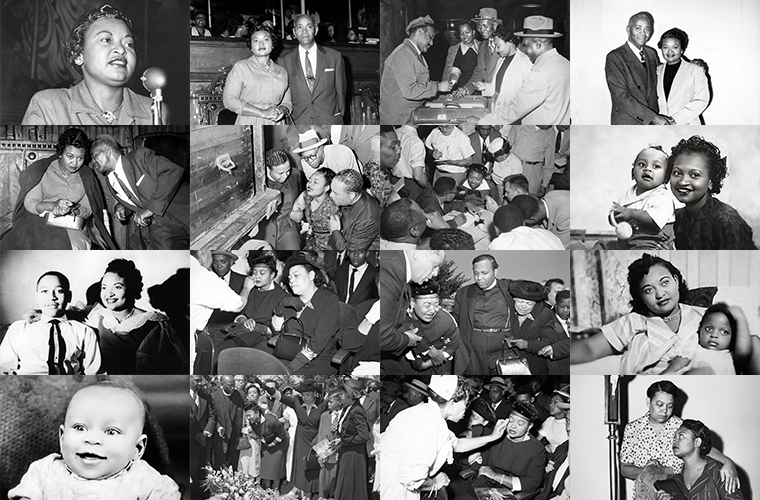Emmett Louis Till was born on July 25, 1941, in Chicago, Illinois, to Mamie Carthan Till and Louis Till. Growing up on the South Side of Chicago, Emmett, known as “Bobo” to family and friends, was a lively and spirited child raised in a working-class African American community. His mother, Mamie, was a devoted parent who instilled in him a sense of confidence and resilience despite the systemic racism that defined much of American life during the 1940s. Mamie worked long hours at the Air Force Procurement Division, ensuring financial stability for herself and her only child after separating from Louis Till, who died during World War II. Emmett’s early years were shaped by a close-knit family, including his mother, grandmother, and uncles, who nurtured his playful personality and encouraged his education at James McCosh Elementary School.
Emmett contracted polio at age five, leaving him with a slight stutter, but he remained outgoing, known for his humor and charm. He loved baseball, often playing in local parks, and was a regular at Argo Community Church, where he sang in the choir. His childhood, while marked by the constraints of segregation in Chicago, was relatively sheltered compared to the brutal racial realities of the Deep South. Mamie taught Emmett to navigate racism carefully, emphasizing the need to avoid trouble in a world where Black individuals faced constant scrutiny and danger.
In August 1955, at age 14, Emmett traveled to Money, Mississippi, to visit relatives, including his great-uncle Moses Wright and cousins. Before leaving, Mamie cautioned him about the stricter racial codes in the South, advising him to be deferential to white people to avoid danger. On August 24, Emmett and his cousins visited Bryant’s Grocery and Meat Market, where he allegedly interacted with Carolyn Bryant, a 21-year-old white store clerk. Accounts of the encounter vary, but Carolyn later claimed Emmett made inappropriate advances, including whistling at her, an accusation that fueled subsequent events. The precise details remain disputed, with some witnesses suggesting Emmett’s actions were misinterpreted or exaggerated due to his unfamiliarity with Mississippi’s rigid racial norms.
Four days later, on August 28, 1955, Roy Bryant, Carolyn’s husband, and his half-brother J.W. Milam abducted Emmett from Moses Wright’s home in the early morning hours. They brutally beat, tortured, and murdered him, shooting him in the head and weighting his body with a cotton gin fan before dumping it in the Tallahatchie River. His body was discovered three days later, mutilated beyond recognition. Mamie insisted on an open-casket funeral in Chicago, allowing thousands to witness the horrific violence inflicted on her son. Jet magazine and other Black publications printed photographs of Emmett’s disfigured body, galvanizing public outrage and bringing national attention to the brutality of racial violence in the South.
The trial of Bryant and Milam in September 1955 became a flashpoint. Held in Sumner, Mississippi, before an all-white, all-male jury, the proceedings were marred by racial bias. Moses Wright courageously testified, identifying the perpetrators, a rare act of defiance for a Black man in the Jim Crow South. Despite overwhelming evidence, including the defendants’ later confession in a 1956 Look magazine article (for which they were paid), the jury acquitted both men after a brief deliberation. The trial exposed the deep-seated racism in the legal system and became a catalyst for the burgeoning Civil Rights Movement.
Mamie Till-Mobley dedicated her life to seeking justice for Emmett, speaking across the country and collaborating with civil rights organizations like the NAACP. Her memoir, “Death of Innocence,” co-authored with Christopher Benson, detailed her son’s life and her own activism. Emmett’s murder is widely regarded as a pivotal moment that inspired activists, including Rosa Parks, who cited his death as a motivating factor in her refusal to give up her bus seat months later. The case also influenced federal legislation, such as the Civil Rights Act of 1957, and continues to resonate in discussions of racial justice.
In 2004, the U.S. Justice Department reopened the case based on new evidence, but no further convictions were secured. In 2017, Carolyn Bryant Donham admitted to fabricating parts of her original testimony, reigniting public interest and debate. Emmett’s legacy endures through memorials, including a 2006 renaming of a Chicago street in his honor and the preservation of the Tallahatchie County Courthouse as a historic site. The Emmett Till Interpretive Center, established in Sumner, promotes education and reconciliation, while his name remains a powerful symbol of the fight against racial injustice.
Emmett Till’s life, though tragically brief, left an indelible mark on American history. His story exposed the horrors of systemic racism and galvanized a movement that transformed the nation’s conscience, ensuring his memory continues to inspire justice and equality.


